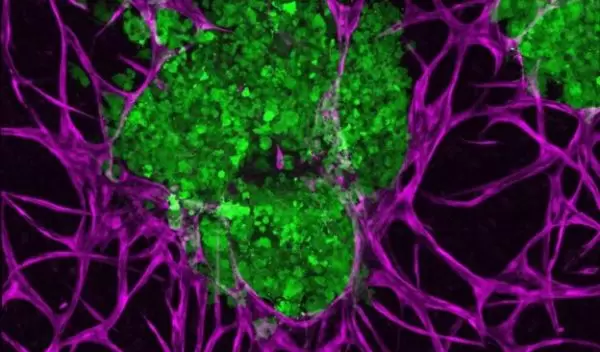
The microenvironment of breast cancer in three dimensions
Cancerous tumors thrive on blood, extending their roots deep into the fabric of the tissue around them. They alter the genetics of surrounding cells and evolve to avoid the protective attacks of immune cells. Now, Penn State researchers have developed a way to study the relationship between solid, difficult-to-treat tumors and the microenvironment they create to support their growth.
The U.S. National Science Foundation-funded method has the potential to act as a testbed for drugs and other anticancer treatments, according to Ibrahim Ozbolat, a biomedical engineer who led the research. The details of the approach are published in Advanced Biology.
Using metastatic triple-negative breast cancer cells -- the most aggressive breast cancer, for which there are few treatments -- and specialized modeling techniques, the researchers cultivated tumor microenvironments.
"We brought together the tumor and its microenvironment and studied how the embedded tumor affects its surrounding matrix," said Madhuri Dey, first author of the paper. "Then we asked if we could get any meaningful genetic information from this composite system."
Typically, researchers examine the genetic information of single cells in a system to understand which signals are being sent and received to encourage specific behaviors. However, Dey said, the individual actions may not reveal every facet of a composite system.
"We looked at the genome of the entire system," Dey said. "The result was a far more representative understanding of how cells talk to each other in native conditions."
The scientists found that the physiological changes in tumor behavior such as growth or movement are a direct result of cellular communication in the tumor's microenvironment.
Cancer cells communicate with the cells lining blood vessels, called endothelial cells, that also control the exchange of materials between blood and the extracellular environment. Cancer cells also communicate with the cells that secrete collagen to produce the scaffolding of tissues, called fibroblasts.
With these discoveries, researchers hope to develop new ways of controlling cancer.


